Disclosure: Meeple Mountain received a free copy of this product in exchange for an honest, unbiased review. This review is not intended to be an endorsement.
“You can get pretty far in life with a smile, but you can get a lot farther with a smile and a gun.” – Al Capone
The city never changes. Those grimy districts packed to the gills with goons, each one trying to corner a market that never closes. The crunching boots of corrupt coppers, as liable to seize your hard-won assets as they are to overlook your obvious proclivities. The occasional flash of eldritch energy spotlighting the dark figures who stalk the night. Looming over it all are the Bosses, shadowy masterminds who pull the strings of their criminal empire. In a city like this, only one Boss can rule the streets. Will it be you?
School of Hard Knocks
With a Smile & a Gun is a dice-drafting area-majority game for 1-2 players set in an occult-tinged version of the Prohibition. Over the course of 3 rounds, players select dice to move their single Boss meeple around the outside edge of the board as well as to take specific actions which aid themselves or hinder the other player. At the end of those 3 rounds, the player who has scored the most points from controlling specific illegal markets is the winner.
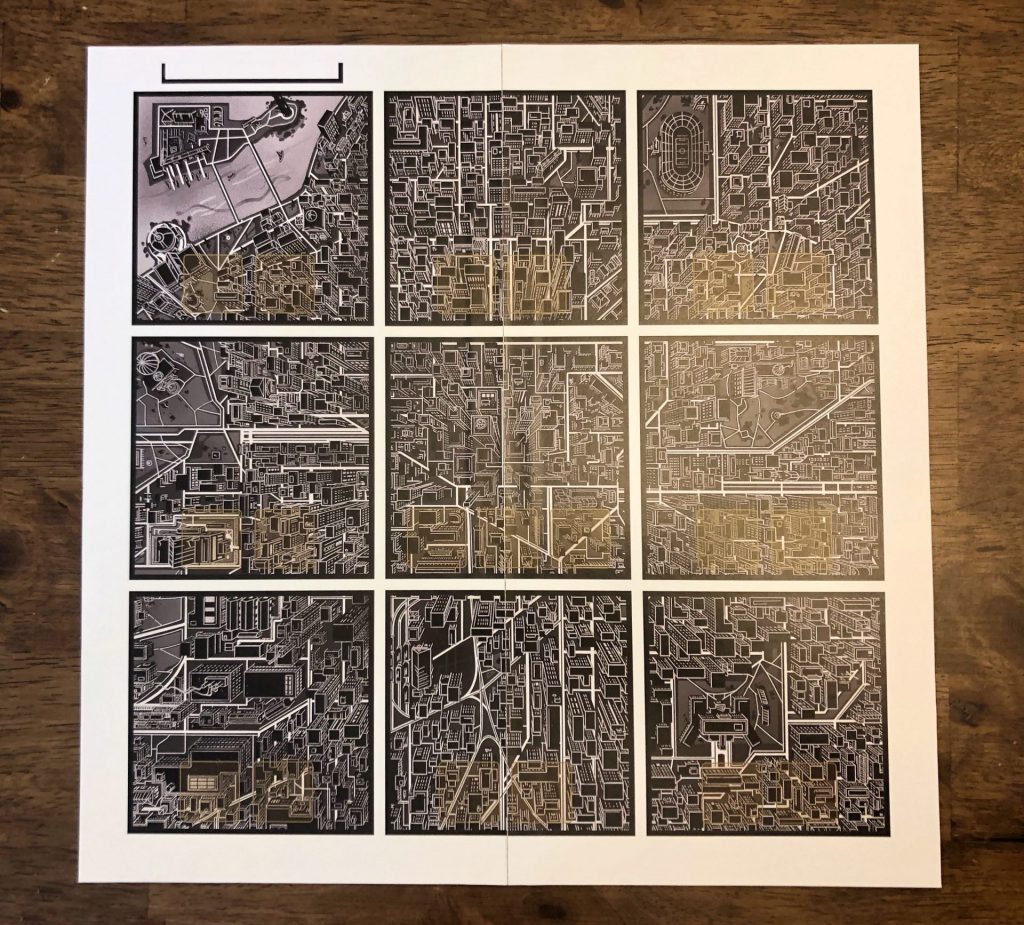
Let’s start with the board. This top-down view of the city is broken into a 3×3 grid of districts. Each of those districts is a potential flashpoint in the ongoing turf war between the two players’ factions. At the start of each round the eight outlying districts are seeded with 2 random Control tokens apiece which represent the various nefarious activities being contested, such as Gambling and Weapons. Certain tokens are worth raw points in the end while others earn points for the player who has the majority of that type. The central district receives 3 tokens instead.

Once the 13 dice have been rolled, players will take turns drafting 2 dice at a time. One die is used for movement and one is used to take a specific action from a shared list. The actions allow players to add, move or remove cubes in order to control whose influence is ascendant.
When a player takes a die for movement, they move their Boss meeple that many spaces clockwise around the edge of the board. Next, they lay cubes of their color in a weakening line starting from their meeple: 3 cubes to the adjacent district, 2 to the next, and 1 to the most distant in the line.
At the end of each round, players will draft Control tokens from each district based on who holds the majority of influence in it. The faction with the most cubes gets the first pick. If there’s a tie for first place, the district is frozen: neither Influence cubes nor Control tokens are removed, leaving the battle to be decided in the next round.

The players aren’t the only ones looking to get a piece of the action, though. Most of the Control tokens also have a Police rating associated with them. After placing tokens on the board, blue Police cubes are added to match the rating in each district. Police in this game serve as a spoiler faction who want to make sure they get their cut. At the end of each round, the Police can claim Control tokens just like the human players, according to a set priority list. This means if the cops have the majority in a district, they might steal the best rewards before a player can grab them.
After the players have each drafted 6 dice (3 for movement and 3 for actions) the final die of the round is used to move the Shadow. One of 5 variable-powered Shadows is chosen randomly at the beginning of the game to add yet another thing for the players to think about; once the Shadow has moved, it takes its action in the District closest to it. These actions often drastically rearrange the balance of cubes in the affected District.

After 3 rounds, the players tally up their Control tokens. The simplest of these are the Hat tokens, which confer a flat amount of points as listed on the token. Each of the other 4 categories grant a certain amount of points (based on the rarity of the tokens) to the player who has the most tokens of that type. Players can earn twice as many points for having all the claimed tokens of a type, meaning they were skilled enough at boxing out their opponent to achieve a monopoly. The player with the most points wins the game.
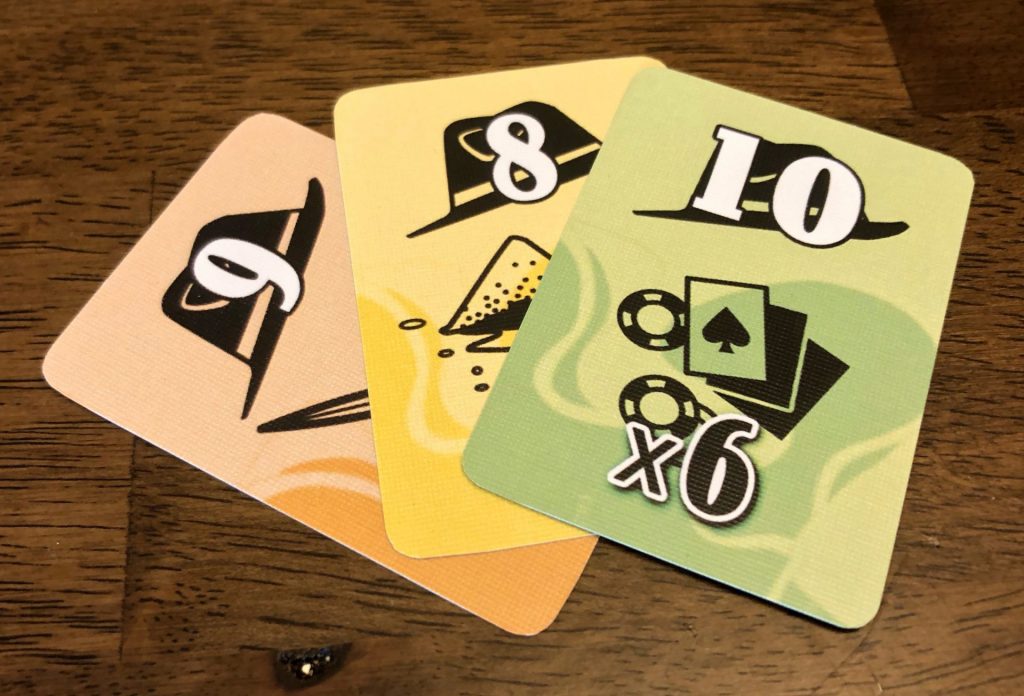
Though designed by Jon Vallerand as a two-player game, a solo mode from Carla Kopp allows a single player to face off against an AI opponent. The exact extent of solo play is dependent on Kickstarter funding, but the possibilities I saw in the prototype felt expansive. Options to play for a high score, at different difficulty levels, and even across a series of campaign missions mean that this could end up being a long-lasting solo game. Playing against a scripted opponent changes the feel of the game dramatically, though in my limited experience the solo mode was just as fun and difficult as the two-player mode. A few rules tweaks, such as rerolling the dice or adding more influence cubes per move, help the AI compensate for its increased predictability.
A Criminal Mind
I’m always excited by games where movement is fraught with decisions and With a Smile & a Gun delivers on that front. There’s a sweet science to choosing your movement and action dice each turn. Your Boss can’t be everywhere so you have to pick your battles carefully, focusing your influence on the Control tokens you care about the most and hoping that your opponent doesn’t interfere. Since you can see what options are available, you can anticipate your opponent’s actions and try to block them by taking the die they need.
There’s more to it than that, though. The movement dice offer indirect influence over the board while the action dice offer a small amount of direct control. By using both to the utmost, players can craft some downright dirty strategies. One turn might see a player sneaking a spare cube into a district they can’t meaningfully compete in, letting them pilfer the second- or third-place choice without an all-out brawl for the top spot. On another turn a player might use their action to add a Police cube and tie the opponent out of their hard-earned rewards. Over the course of a round, a player may also be taking dice with an eye towards the Shadow, trying to ensure that this powerful force ends up in the exact right spot to turn a sure loss into a sneaky win.

And I haven’t even talked about the Infusion powers yet! This randomly chosen occult ability is shared by both players but requires one of the somewhat rare Infusion tokens to use. Choosing when — or whether — to chase the Infusion tokens is yet another layer of strategy. Since the powers change with each game there’s never a hard and fast answer, especially when taking an Infusion token often means giving up points in hand.
The Dark Art(s)
The Infusion tokens represent one of the things I both like and dislike about With a Smile & a Gun. While the theme is quite appealing the game rations it out, only offering the occasional drip to slake your thirst without ever letting you drink the whole bottle. The gameplay itself feels slightly dry at times, offering a more mathematical approach to criminal enterprise than one might expect from the art and theme.
There are a few delightful details if you care to look. Perhaps my favorite is the Enthralling power, an Infusion ability that lets you convert some of the Police in one district to your faction. It may only be exchanging cubes of one color for another on the board, but there’s a story there: sirens in the distance, a zoot-suited mook keeping lookout, glowing eyes peering from the dark of an alley, and then BAM! The coppers are shoveling contraband into the back of your truck.
Ultimately, what makes the theme work is that it’s just unusual enough to be interesting without being too involved. Both the noir genre and the supernatural element are familiar. The cinematic details are already in your brain, so the game only needs to evoke them rather than spell it all out. Those who love richly thematic games will probably find this one a bit lacking while those who prefer completely themeless ones might be pleasantly surprised. Personally, I would have liked a little more, but only because what is there feels like such a great start.

The art and graphic design do go a long way in filling the mental gaps. I’m always a sucker for that neo-noir color palette and it’s perfectly appropriate here. There’s a lot of iconography in the game and while some of the abilities are complicated enough that the rulebook should be kept handy, the basic stuff is easily and expertly conveyed. Moreover, the design elements all feel completely appropriate to the setting.
End of an Empire
With a Smile & a Gun is a strong entry from first-time designer/publisher Jon Vallerand. What impresses me most is that, while the rules aren’t particularly complex, the decision space expands with the players’ skill level. Learning the ropes isn’t too hard; running a criminal empire is. Each game requires new tricks and strategies to stay on top. Fail to keep up and you’ll find yourself outgunned.
If you’re looking for an exceptionally solid game for one or two players, head on over to Kickstarter to back With a Smile and a Gun!


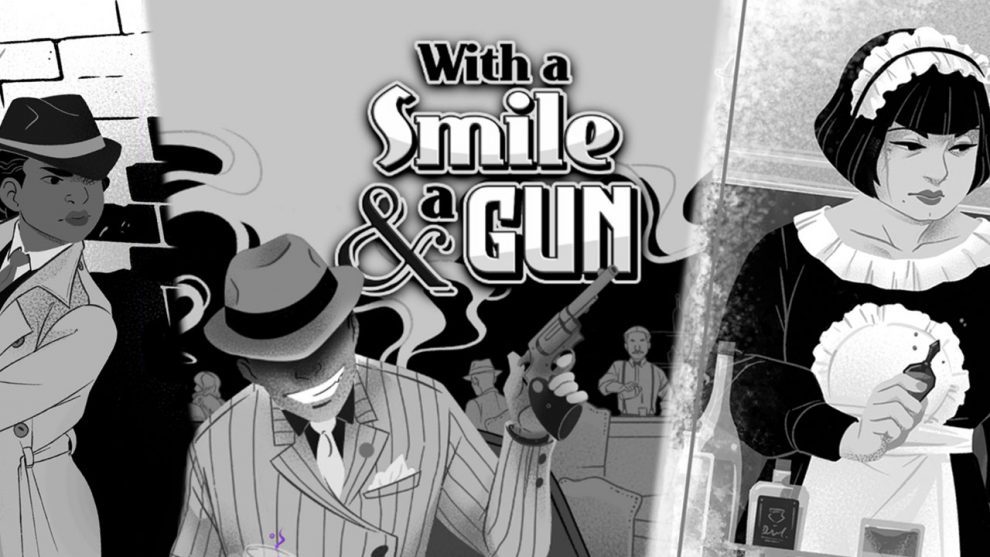

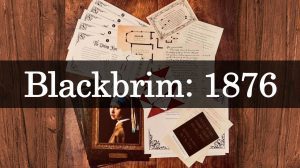
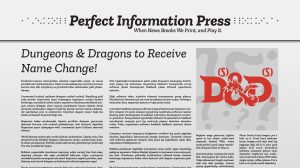





Add Comment